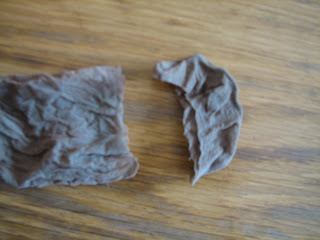Materials Required:
A leg from a pair of tights or pantyhose
Large plastic Easter eggs (representing the food bolus)
Scissors
Additional plastic eggs (optional for a race)
Basket (optional, for holding eggs)
Steps Involved:
Begin by explaining the concept of peristalsis to the students, emphasizing how the muscles in the esophagus contract to push food down to the stomach.
Take a leg from a pair of tights or pantyhose and cut off the toe to create an open-ended tube. This will serve as the “esophagus.”
Show the students a large plastic Easter egg, explaining that it represents a food bolus.
Place the egg into one end of the “esophagus” tube. Hold the tube vertically, demonstrating that gravity alone does not cause the egg to fall through.
Ask the students to determine the best way to move the egg through the tube. Guide them to understand that squeezing the “esophagus” above the egg simulates the muscle contractions in the esophagus during peristalsis.
Allow each student to try moving the egg through the tube by squeezing it, helping them grasp the physical process of peristalsis.
For added fun, provide each group of students with several plastic eggs and have them race to see which team can move all their “food boluses” through their “esophagus” the fastest.
Conclude the activity by discussing how this simple model represents the vital process of peristalsis in our digestive system.

